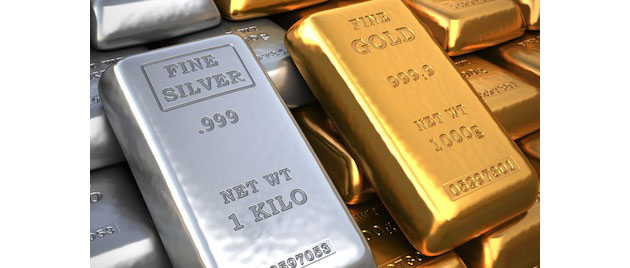The Gold Report: There seems to be a general malaise in resource investing, particularly in precious metals. What will it take to get investors back in the market?
Jay Taylor: People buy gold in difficult times, and right now there is a sense that the economy is improving. The conventional wisdom says that the huge amounts of money Federal Reserve Chairman Ben Bernanke is pumping into the system will bring prosperity. To the extent that people are investing, they are choosing more traditional investments. People have been so badly burned that small investors have stayed out. They are gun-shy, and for good reason.
TGR: While the mainstream media is reporting an economic turnaround, the markets do not reflect that, at least from the individual investor perspective.
JT: Absolutely, and that is because the middle class is having a tougher and tougher time of it. The hedge fund managers and the people playing with wealthy people's money can speculate in the stock market and the commodities markets. They have done quite well recently, but the average investor is being squeezed very hard. In large part, that is because the cost of living is higher relative to their salaries and people have lost huge amounts of money in the value of their homes.
"Printing money and capitalizing the banks, redistributing wealth—this is wiping out savings, investment and capital formation."
I do not buy the notion that we are on the mend. To the contrary, I think the policies being used will be lethal for our economy in the long term. Printing money and capitalizing the banks, redistributing wealth—this is wiping out savings, investment and capital formation.
In the last reporting period, the U.S. was at negative gross domestic product (GDP). If you look at the real inflation numbers, I would think that few people believe their cost of living is rising only 1.7% a year, which is what the government is reporting. If the cost of living is actually going up more like 8–9%, as economist John Williams suggests, we are in real negative numbers once GDP is factored in.
The misguided perception that things are getting better may make it difficult for gold and for silver, too. One of the reasons the precious metals mining sector is having a tough time may be that the hedge funds, having bought into gold shares and gold mining companies, are now finding other things to invest in. The investors who used to buy penny mining stocks are certainly not in the market now.
TGR: Yet, people in Second- and Third-World countries are demanding more products that require raw materials to build, so many of the base metals analysts I speak to are fairly bullish on the global economy. Perhaps other economies are actually growing in a true sense.
JT: That is probably right. China is an interesting example.
Despite having a planned economy, you can make the argument that China is really a capitalist society. Despite its official use of the word "Communism," there is a real lack of regulation there. One recent guest on my radio show noted it was easier to open 26 for-profit schools in China than it would have been in the U.S. You can make an argument that its lack of onerous regulations makes the Chinese more free than we are.
"The misguided perception that things are getting better may make it difficult for gold and for silver, too."
China also is a nation where people save money, something Americans have forgotten how to do. In our Keynesian economy, we punish savers; we tax and take away their wealth. Mr. Bernanke's zero-interest-rate policy is robbing American savers and is taking away capital formation. China has capital formation. It does not have all these so-called safety nets in place to take care of people. People save for themselves and their future. The U.S. calls itself a capitalist country, but it is more of a collectivist society than China.
You can make a good case that China and other underdeveloped countries are just getting started. Ultimately, that is bullish for gold and silver because people in those countries understand the real wealth of gold and silver.
TGR: Central banks in other countries are accumulating gold. Private investors in China, Abu Dhabi and Dubai are also acquiring physical bullion. Perhaps this bullish market will stimulate the precious metals industry.
JT: I think that is right, Sally. People in those countries recognize that if they put their savings into the local currency, it could be gone tomorrow. They understand that gold and silver are real wealth. Americans are not that smart. We have been told to trust our policymakers, and most Americans do.
I think there is bullish case to be made longer-term gold, although we are in for some tough sledding in the gold markets.
TGR: Analysts and investors are clamoring for income in portfolios and are looking for dividend-paying stocks. Even some junior mining companies are paying a dividend. Will more mining companies follow this trend to deter investors from leaving the sector in search of dividends, or will the industry continue putting money into capital expenses and mergers and acquisitions, as it has historically?
JT: That is a tough call. The mining industry is so capital intensive. On the other hand, companies realize that they need to get their share prices up to a reasonable level. There is a real push and a pull.
"You can make a good case that China and other underdeveloped countries are just getting started. Ultimately, that is bullish for gold and silver."
There is no question that companies that can provide a dividend will do much better in the market. For my newsletter, I am looking for companies that are cash-flow positive, companies that do not have to raise capital. If a mining company has to raise capital to drill highly speculative holes in the ground, the market will not support that today.
TGR: Of course, many of the companies that have sufficient cash are invisible to investors because they do not need—or get—the attention of investment banks and analysts. Can you tell us about any of these diamonds in the rough—companies that are producing, have healthy treasuries and balance sheets and are able to reward their shareholders with increased production and share price profiles?
JT: One is Dynacor Gold Mines Inc. (DNG:TSX). There are lots of small, family-owned, high-grade mining projects in Peru, too small to warrant building a mill. Dynacor provides that processing service, using environmentally accepted practices. The company has been able to get higher recoveries than other operations that were not working within environmental and other regulations. Basically, Dynacor can now select the grades it wants; as a result, its earnings are growing rapidly. It just got permitted to build a second mill. Within two years, I expect annual production will be near 100,000 ounces (100 Koz).
It does not pay a dividend, but its earnings are growing nicely. Production at its processing plant in Peru is increasing and it also has an exploration project with blue-sky potential. The property is in the middle of major copper-gold pour-free targets. Dynacor does not issue shares; it is growing organically. Its shares are selling at two or three times cash flow right now.
TGR: And Dynacor does not have to get the gold out of the ground.
JT: It does not. Other people bring the gold to Dynacor.
The company does have its own non-NI 43-101 resource of more than 600 Koz or 800 Koz in a high-grade, underground vein system at a project called Tumipampa. It is a pour-free skarn gold-and-silver target, in the middle of some major deposits. Dynacor has some very good surface showings. The company expects to mine Tumipampa itself.
TGR: Dynacor has gone from $0.60 to $1.33/share in the last six months. Only a handful of mining companies could boast that.
JT: Yes, and it did it in a horrible market environment.
But my number-one pick this year is a streaming company called Sandstorm Gold Ltd. (SSL:TSX). It takes the model Silver Wheaton Corp. (SLW:TSX; SLW:NYSE) developed for silver and uses it for gold. In fact, Sandstorm was started by former Silver Wheaton mangers.
"There is bullish case to be made longer-term gold, although we are in for some tough sledding in the gold markets."
In this model, Sandstorm provides capital to mining projects that it believes are economically viable. The investments tend to happen after the mining company has finished its full feasibility and permitting; in other words, when most of the risk is taken out. But Sandstorm also looks for major exploration upside. For example, management might work a deal for 15–20% of the life-of-mine production, linking the cost of production to when production starts or when the feasibility study is done. In effect, Sandstorm is entitled to buy gold at 20% of the gold production at, say, $400/ounce ($400/oz). With the gold price at $1,600/oz today, that is a darn good margin. In addition, Sandstorm does not have to put in any sustaining capital. It just keeps on buying that gold at $400/oz for the life of the mine.
Sandstorm does its homework, focusing on projects with good economics, but also lots of exploration potential. The company has a number of projects coming on-line. Some of its early projects are now increasing production. Sandstorm is extremely well managed and, for investors who do not want to study individual companies, it is similar to owning a mutual fund with a streaming model.
TGR: In a way, it is better than a mutual fund because it gives investors a basket of companies that have been studied closely by management, more closely than any mutual fund manager would study any individual stock that he or she owns. This is an amazing business model. Are there other names you like, maybe even an explorer?
JT: I am now much more selective on the explorers, but I have several on my list.
I like Brazil Resources Inc. (BRI:TSX.V; BRIZF:OTCQX) a lot. One should always start by looking at management, and Chairman Amir Adnani is highly regarded. He did a remarkable job for Uranium Energy Corp. (UEC:NYSE.MKT). Brazil Resources has at least one very good, advanced-stage property now, and has arranged financing with Brazilinvest Group, a financial concern that owns a lot of the company's shares.
TGR: Amir has moved his companies forward. Brazil is a great mining address, although lesser known and understood. Do you see any issues there?
JT: Politically, Brazil is one of the better jurisdictions these days and it has the geology.
Columbus Gold Corp. (CGT:TSX.V) is another explorer to keep an eye on. The company just increased the potential of its open-pittable gold project in French Guyana to upward of 5.3 million ounces (5.3 Moz). French Guyana operates under the French legal system, and the top Columbus geologist is a French Canadian, so he speaks the language. Columbus has an alliance with a publicly listed French mining company. The French company likes to mine the surface saprolite, and Columbus has the skill set to do the hard rock stuff.
I also like Golden Arrow Resources Corp. (GRG:TSX.V). It has a lot of cash and an evolving silver project in Argentina that appears to have a high probability of substantial success.
"If a mining company has to raise capital to drill highly speculative holes in the ground, the market will not support that today."
I thought I would never again be interested in South Africa until I saw Robert Friedland stepping into Ivanplats Ltd. (IVP:TSX). Ivanplats is a nickel and platinum group metals (PGM) gold project with extensive, high-grade PGMs and gold in a structure with extensive strike length and impressive depth and width. The scope of the structure promises superb mining economics. Of course the downside is being in South Africa. However, Robert Friedland has lots of capital and very important political connections.
Northern Freegold Resources Ltd. (NFR:TSX.V; NFRGF:OTCQX), up in the Yukon, has 6.3 Moz gold equivalent; about half of it in gold. Infrastructure can be problematic in the Yukon, but Freegold has road access rights to the property and a nearby power line. The stock is selling for around $0.10/share.
TGR: I seem to remember some connection between Freegold and Western Copper and Gold Corp. (WRN:TSX; WRN:NYSE.MKT).
JT: Yes, the two companies are the in same backyard.
TGR: Who else is active in Canada?
JT: Aurvista Gold Corp. (AVA:TSX.V) has a promising greenfield project in Québec, Canada. The NI 43-101 numbers are around 3 Moz. It is open pittable. At first blush, the stripping ratio is relatively low, but the economics should be good. I do not know how much metallurgical work has been done, but there was a long lateral strike.
Being in Québec is an advantage, given the laws and investment incentives there. Norvista Resources Corp. owns a big chunk of Aurvista shares and contributes strong connections through its presence on the board of directors.
TGR: I would like to talk about your radio show "Turning Hard Times into Good Times." Is that name applicable today?
JT: It is. The Dow Jones Industrial Average is close to new highs. The Wall Street bankers still have their penthouses on Fifth Avenue and their houses in the Hamptons. However, the middle class is still being hurt.
"Markets are driven by sociological trends, by philosophical and theological thinking."
On the show, we try to help people understand what is true, not necessarily what they want to hear. We invite interesting guests. This week, we had Peter Schiff and Mark Skousen. Jim Rogers and a theologian named Dr. Albert Schmidt will be on soon.
I like to reach beyond the financial because the spiritual is part of how people approach life. Markets are driven by sociological trends, by philosophical and theological thinking.
But the main focus is how to survive in tough times; how to make money by recognizing the reality rather than pretending things are good when they are not.
TGR: I hear you saying that there are opportunities for thoughtful, selective investors.
JT: Absolutely. The energy sector is the bright spot in the American economy right now. There are some extraordinary refinery stocks and energy sector plays. A company called Synodon Inc. (SYD:TSX.V) has a new technology for pipeline leaks. Paul van Eeden is very much involved in it, and I am very excited by it.
TGR: Are you excited about uranium?
JT: I like uranium and believe we are close to a turning point there. Uranium Energy Corp. looks really good. Another is Blue Sky Uranium Corp. (BSK:TSX.V), a penny stock, selling around $0.10/share. AREVA (AREVA:EPA) is involved in financing its exploration in northern Argentina. The $2 million AREVA spent will go a long way in exploring Blue Sky's shallow holes. This could turn into a very large, low-grade open-pittable uranium deposit.
TGR: Well, Jay, we may have not solved the problems of the universe, but thanks for your time and your insights.
As he followed the demolition of the U.S. gold standard and the rapid rise in the national debt, Jay Taylor's interest in U.S. monetary and fiscal policy grew, particularly as it related to gold. He began publishing North American Gold Mining Stocks in 1981. In 1997, he decided to pursue his avocation as a new full-time career—including publication of his weekly Gold, Energy & Technology Stocks newsletter. He also has a radio program, "Turning Hard Times into Good Times."
Jay Taylor will be presenting his thoughts on how to select good investments in the resource sector at the upcoming PDAC 2013, taking place at the Metro Toronto Convention Centre March 3–6, 2013. For more information click here.
Want to read more Gold Report interviews like this? Sign up for our free e-newsletter, and you'll learn when new articles have been published. To see a list of recent interviews with industry analysts and commentators, visit our Streetwise Interviews page.
DISCLOSURE:
1) Sally Lowder of The Gold Report conducted this interview. She personally and/or her family own shares of the following companies mentioned in this interview: None.
2) The following companies mentioned in the interview are sponsors of The Gold Report: Brazil Resources Inc., Northern Freegold Resources Ltd. and Aurvista Gold Corp. Streetwise Reports does not accept stock in exchange for services. Interviews are edited for clarity.
3) Jay Taylor: I personally and/or my family own shares of the following companies mentioned in this interview: Ivanplats Ltd., Blue Sky Uranium Corp., Columbus Gold Corp., Brazil Resources Inc., Sandstorm Gold Ltd., Dynacor Gold Mines Inc. I personally and/or my family am paid by the following companies mentioned in this interview None. I was not paid by Streetwise Reports for participating in this interview.




























































